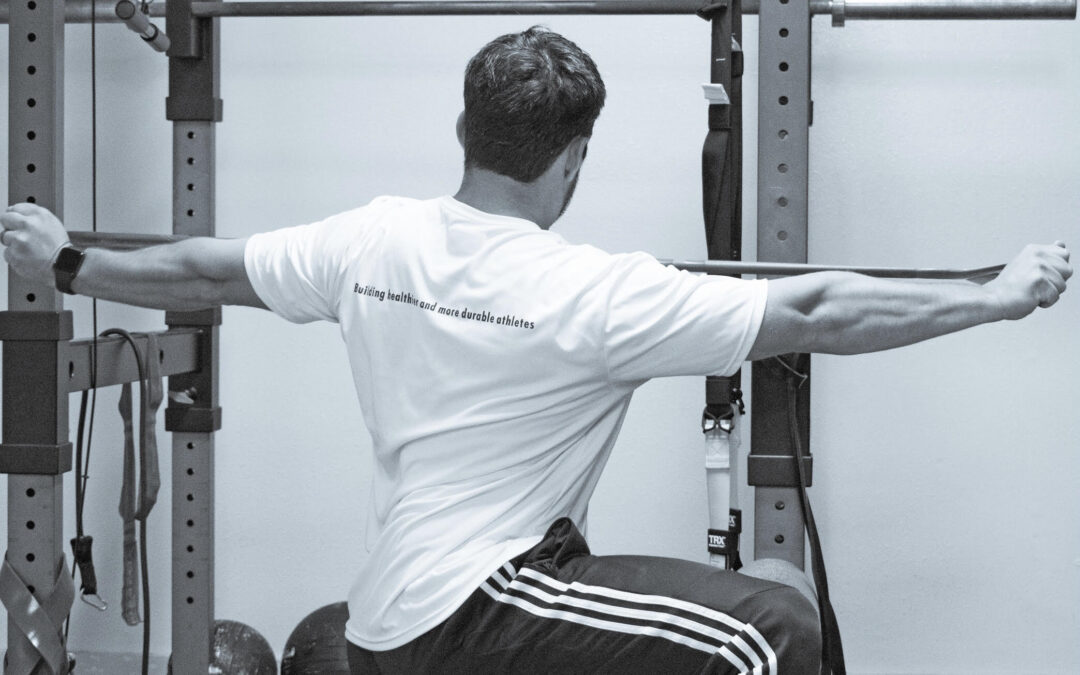Can we stop saying “injury prevention” and start using the phrase “injury risk reduction?” I will be the first to say, I am guilty of using the phrase “injury prevention” due to common use amongst myself and my peers in the sports medicine and sports performance professions. As seen on the website, I still use the phrasing because it has been my experience that coaches and parents are familiar with that phrase. Although I use the phrase “injury prevention” (from time to time), I do my best to educate patients and clients that we aren’t preventing all injuries. The goal is to put them in a position where they are less likely to experience a non-contact injury or as I mentioned earlier, reduce their risk of injury.
Let’s discuss injury prevention in sports, shall we?! The term injury prevention is used by strength coaches, athletic trainers, and personal trainers.
Contact Injuries: If a 320 pound defensive lineman falls on a 165 pound quarterback’s shoulder who is lying on his side and is not braced for impact (even if he is braced for impact), that quarterback is likely coming off the field with some sort of shoulder injury, possibly an AC sprain or clavicle fracture. If soccer athlete A has his or her knee in full extension with their foot planted in the ground when opposing player B puts all their force and body weight into athlete A’s knee on a slide tackle, the outcome will likely be a knee injury for athlete A. A volleyball player steps on a teammate’s shoe while she is landing after a spike, then sprains her ankle, even worse she fractures her fibula. Will you help those athletes put on muscle mass, increase their bone density, and get them firing their nervous system more efficiently? Yes, you will. Are you preventing these contact injuries from occurring ? No, you are not.
Non-contact injuries: We have a basketball player jumping and landing, repeatedly, with excessive knee valgus and extension. Sounds like a potential ACL or a lower limb injury that can withhold an athlete from competing or practicing. How about the folks pitching a full bullpen when they haven’t thrown a softball/baseball in several months, nor having started much less complete a throwing program to recondition the arm. That seems like a potential UCL or labrum injury to me. Sprinting on the track without doing a full warm up. Sound familiar? We all know someone who strained a hamstring (or other lower limb muscle) after skipping out or not properly focusing on warm ups. Can we help reduce these injuries? Yes, we absolutely can.
Are we preventing injuries, or are we reducing the risk of certain injuries? The answer is we are reducing the risk of certain injuries. By implementing proper programming and exercises that correlate with the data, we are contributing to the reduction of injury risk. We can also teach proper mechanics, we strengthen musculature, we can work on proper and functional range of motion and general flexibility, and we can educate athletes on proper loading and warm up techniques. Although the fields of sports medicine and sports performance differ, we can all agree we should educate and deliver the same message to those athletes we care for and work with. Our mission is to teach those principles because YOUR child’s development matters.
Alan Miller, ATC, LAT, CSCS
Owner of Miller Sports Performance and Training
Father and husband
Combing sports medicine and sports performance to build healthier and more durable athletes.

